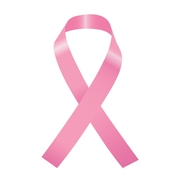 Nelson Marques/PhotoSpin
Nelson Marques/PhotoSpin
The global statistics for breast cancer are staggering: 1 in 8 women worldwide will be diagnosed at some point during their lifetime.
As with all cancers, early detection is key.
Women who are diagnosed early have a 95 percent chance of living at least five years after diagnosis and it's estimated early breast cancer diagnosis could save 400,000 lives globally each year, according to the World Health Organization.
Fine needle aspiration (FNA) is currently the least invasive technique to biopsy breast lumps, or masses. During the procedure — about as painful as a blood test — a doctor retrieves enough cell tissue through a tiny needle for a microscopic analysis.
FNAs are less painful, less expensive to do, result in less complications for patients, and make results available more quickly than the current traditional core or open biopsies.
But here’s the problem. FNAs are currently less reliable in conclusively diagnosing breast cancer than more invasive and painful techniques.
As a result, many health organizations in the United Kingdom, the United States and Canada have now abandoned FNA for breast lesion diagnosis, although they are still used in nine countries worldwide.
What if there was a way to make these minimally invasive diagnostic tests more reliable? No doubt women everywhere would be cheering.
As it turns out, there is.
FNAs can be analyzed through computers equipped with artificial intelligence with a high degree of accuracy. Through the flexibility of cloud computing — a network of remote servers hosted on the Internet to store, manage, and process data — the ability for doctors globally to access the diagnostic tool using a tablet or smart phone now exists.
Meet Brittany Wenger of Lakewood Ranch, FL, the creator of the Global Neural Network Cloud Service for Breast Cancer, the tool that is making it all possible.
Wenger’s Artificial Neural Network (ANN) replicates the human brain in software by modeling neurons and their interconnections. With ANN, patterns too complex for a human or program to even notice can correctly detect breast cancer lesions 99.1 percent of the time.
You might be surprised to learn that Wenger is just 17 years old.
This young genius is the 2012 Grand Prize winner in the Google Science Fair, a global competition for 13-to-18-year olds, sponsored by the computer company in partnership with CERN, Lego, National Geographic and Scientific American. This year’s competition was held in July 23 in Mountain View, CA.
Winners were picked from more than 5,000 entries from 100 countries and as you might guess, the 2012 competition was intense.
“The atmosphere at the competition was electric and absolutely contagious,” Wenger said, noting she made many friendships and “learned so much” from the other presenters.
“We all deserved to win,” she said.
Other winners included:
- a device that converts sound into tactile vibration for the hearing-impaired, designed by 14-year-old Jonah Kohn 14 of San Diego, CA
- a project documenting hazardous and non-hazardous organisms found in water designed by 15-year-olds Marcos Ochoa, Iván Hervías Rodríguez and Sergio Pascual of Logroño, Spain
- a simplified hydroponic system to help poor rural Swazi families grow enough food to feed themselves and generate an income, designed by 14-year-old Bonkhe Mahlalela and Sakhiwe Shongwe of Siteki, Swaziland.
Wenger’s inspirational project is a computer model that thinks like a human brain, meaning the software can’t be programed to complete a specific task, but rather “learns” through experience.
This means the more samples the model looks at, the greater its accuracy.
Wenger’s ANN could theoretically achieve a level of perfection, thereby eliminating any chance of false negative diagnoses and the need for further invasive testing.
Wenger began the two-year project when she was a 10th grade student.
After roughly 600 hours and 7.6 million trials to see how accurately it would detect cancerous tumors, it succeeded with a 97.4 percent success rate in prediction and 99.1 percent sensitivity to malignancy when analyzing samples collected from FNAs.
This is 5 percent more accurate than any similar commercial program now available on the market.
Besides having a real passion for computer science and technology, Wenger’s personal inspiration was her cousin, a breast cancer survivor.
“I set out to create a viable tool for doctors to use that would help people. Having breast cancer is tough, and I wanted to make the experience a little easier,” Wenger said.
Her primary goal right now is to get her model into hospitals worldwide, which will increase the ANN’s detection success rate.
“There’s lots of room for growth,” the now-highschool senior said. She plans to expand the model’s capability so that it will successfully diagnose other cancer types in the coming years.
She plans to continue working on the project as she pursues a career in pediatric oncology, so that one day more women, men and children will have the option for less invasive diagnostic procedures.
Lynette Summerill is an award-winning writer and Scuba enthusiast living in San Diego, CA with her husband and two beach loving dogs. In addition to writing about cancer-related issues for EmpowHER, her work has been seen in newspapers and magazines around the world.
Sources:
Personal Interview, Brittany Wenger. August 27, 2012.
Google Science Fair 2012. Winners and contest information at:
http://www.google.com/intl/en/events/sciencefair
Diagnostic value of fine-needle aspiration biopsy for breast mass: a systematic review and meta-analysis. Ying-Hua Yu, Wei Wei, Jian-Lun Liu. BioMed Central. 25 Jan. 2012. Open access article at:
http://www.biomedcentral.com/1471-2407/12/41
Breast Cancer Statistic Worldwide. World Health Organization. Accessed 27 August 2012 at:
http://www.worldwidebreastcancer.com/learn/breast-cancer-statistics-worldwide
Reviewed September 4, 2012
by Michele Blacksberg RN
Edited by Jody Smith





Add a CommentComments
There are no comments yet. Be the first one and get the conversation started!